Year 4 Properties of Shapes Worksheets
Identifying Regular and Irregular Polygons
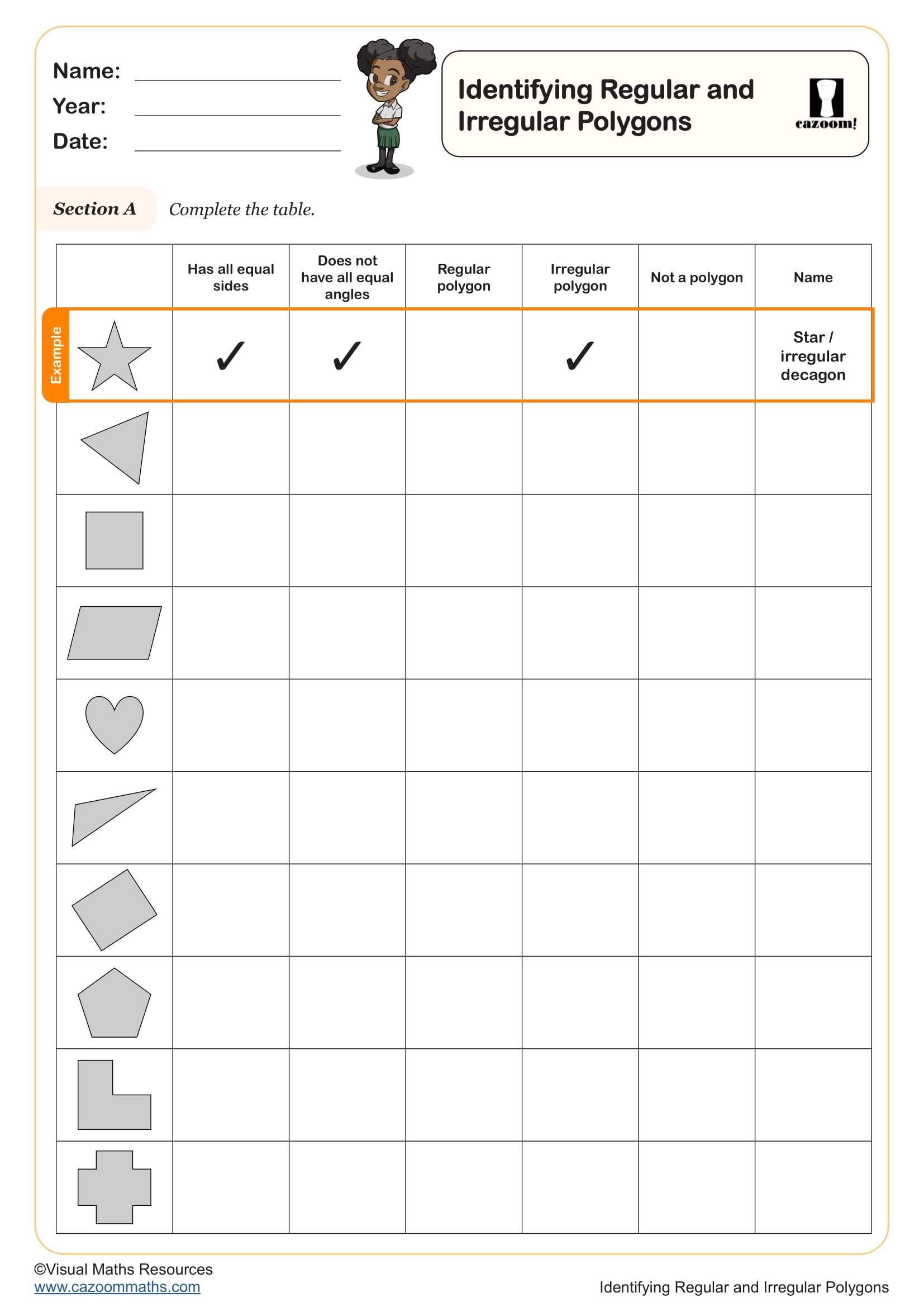
Lines of Symmetry (A)
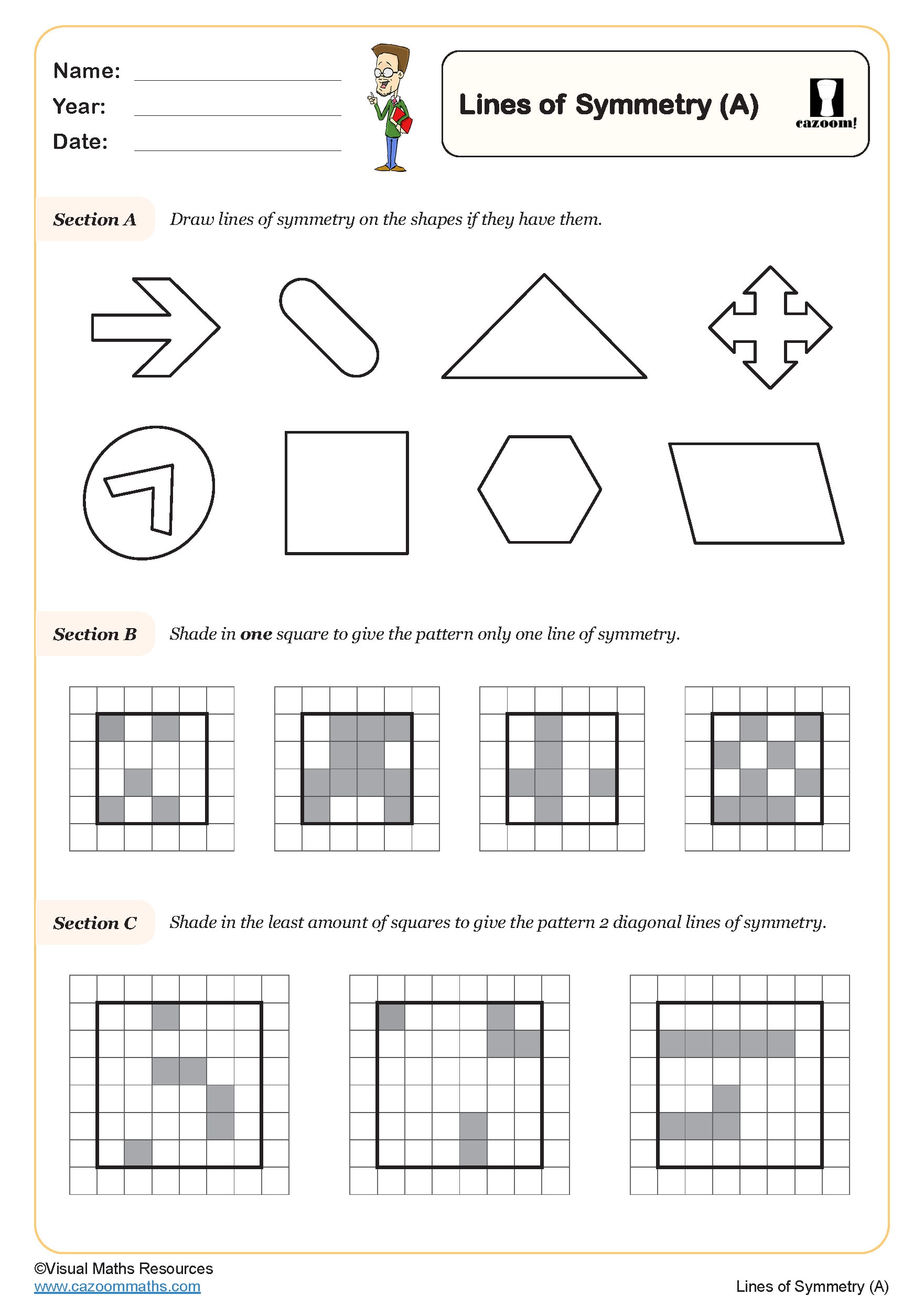
Perimeter of Regular Polygons
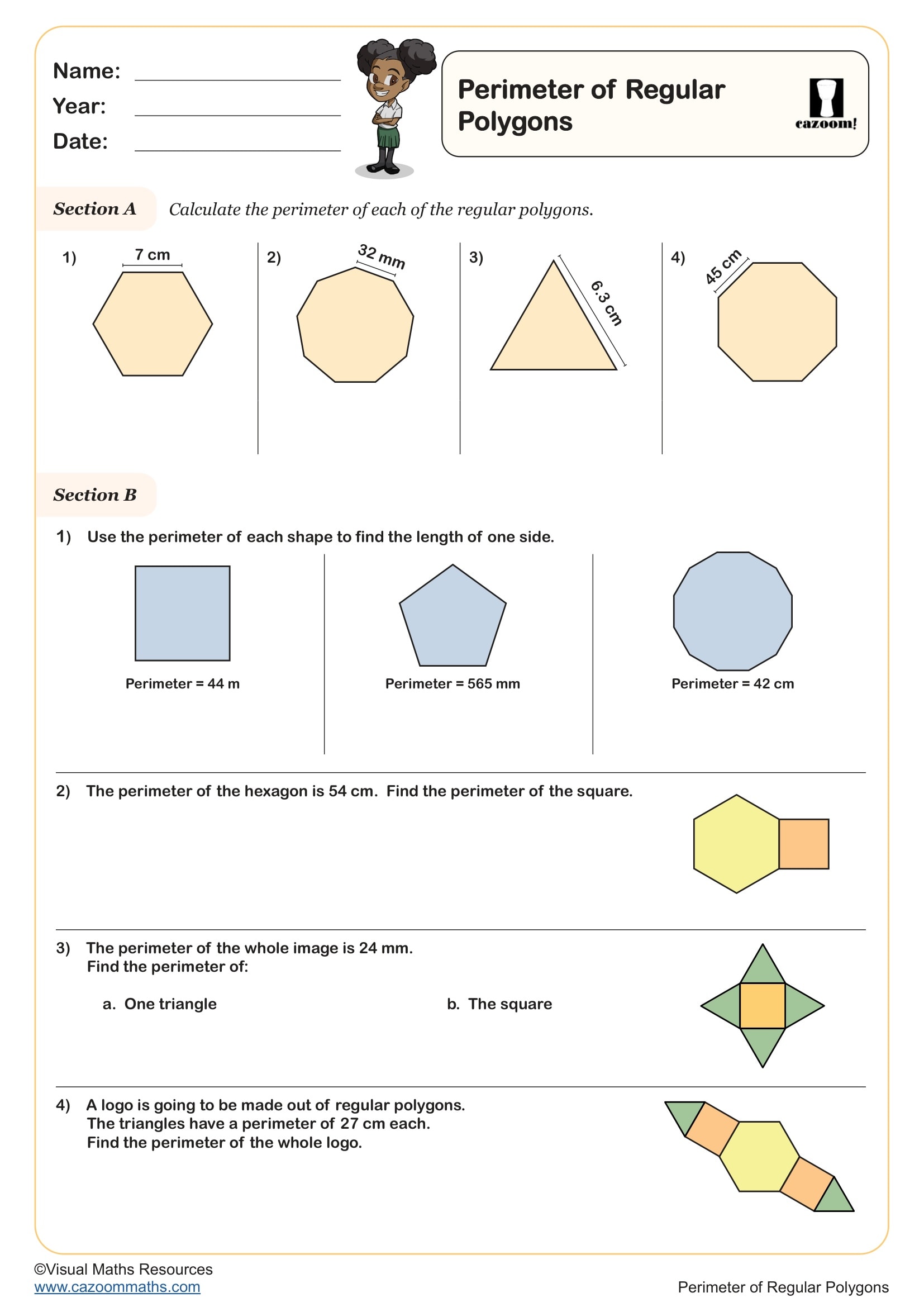
Properties of Quadrilaterals (A)
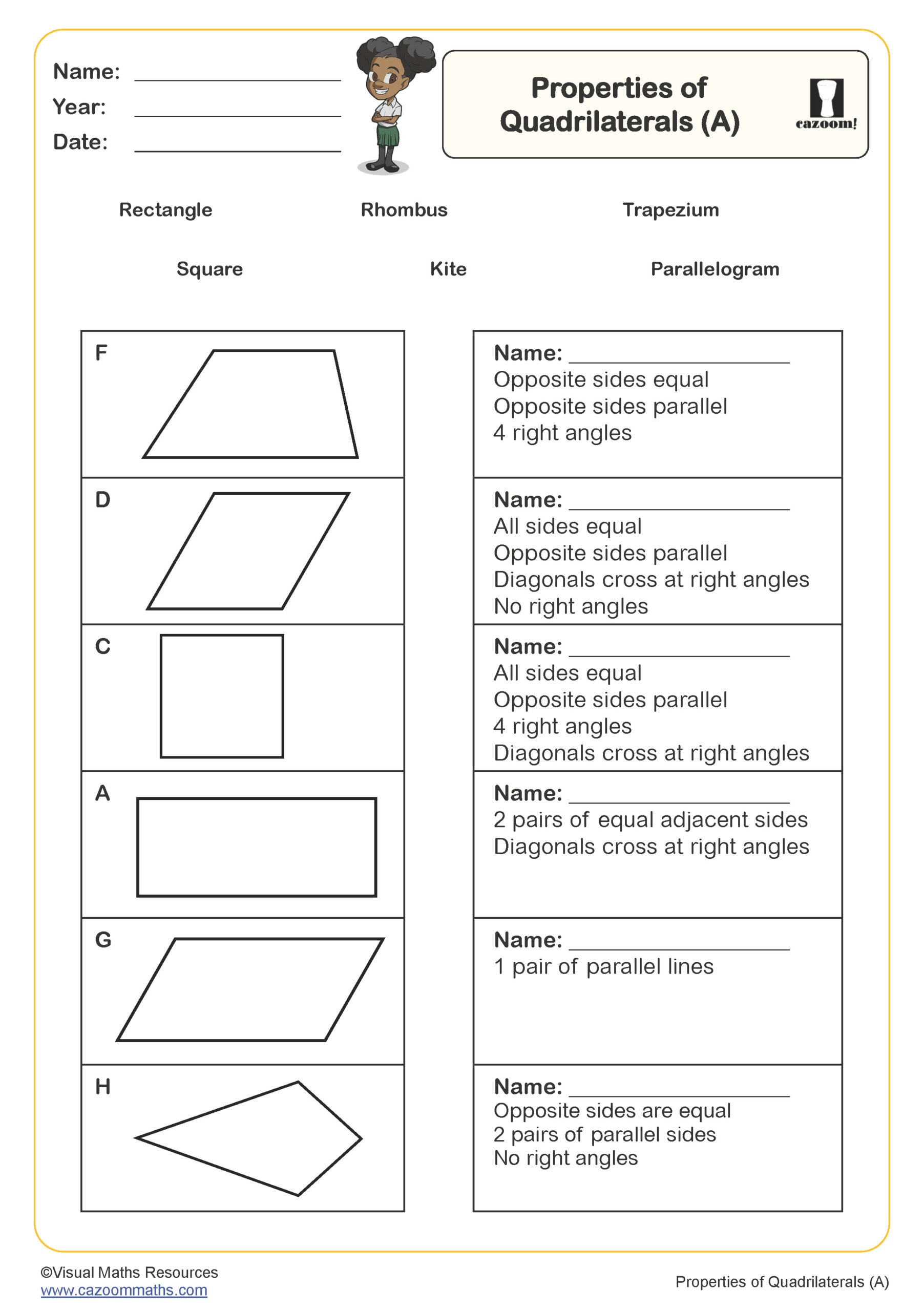
Properties of Quadrilaterals (B)
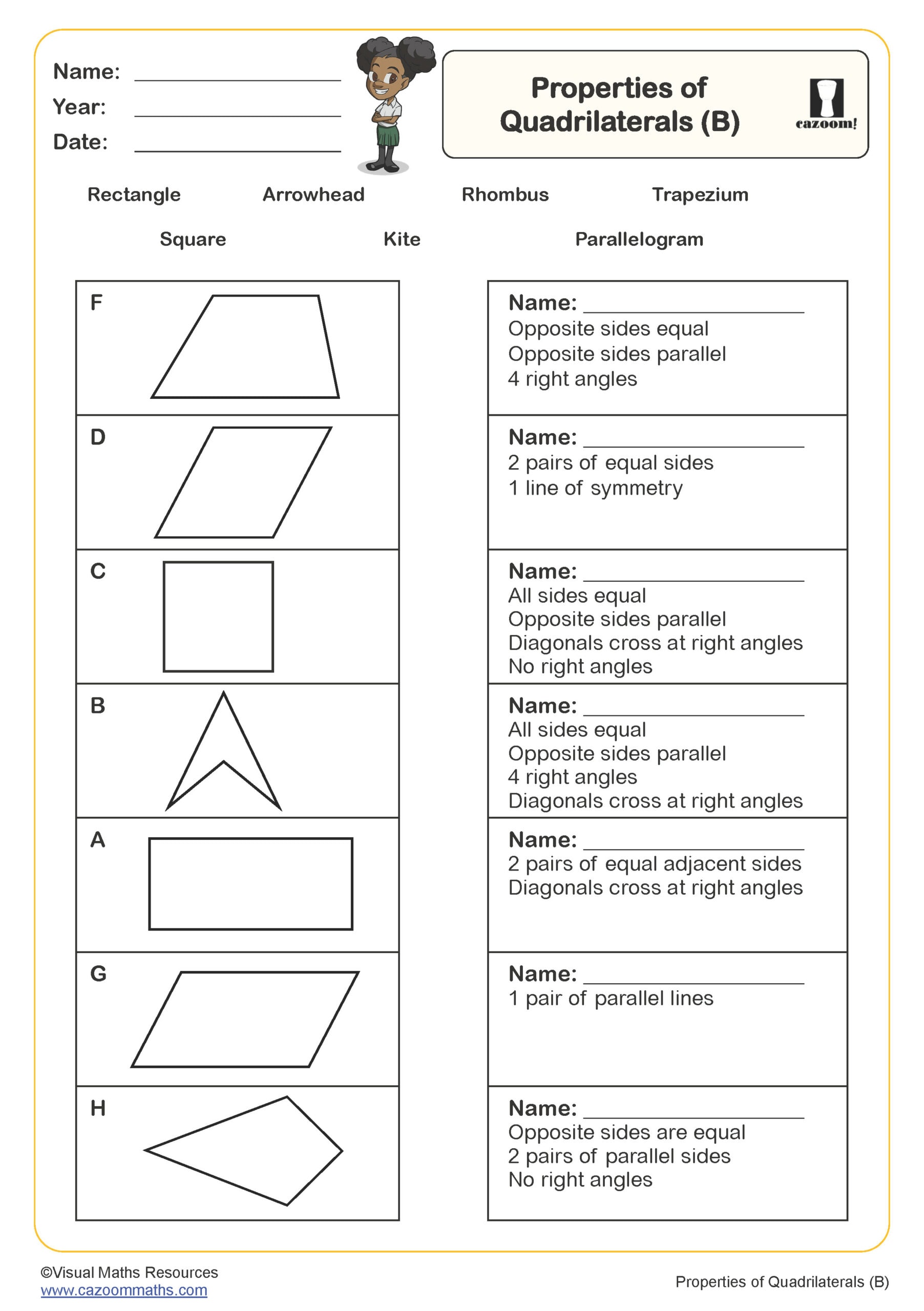
Properties of Quadrilaterals (C)
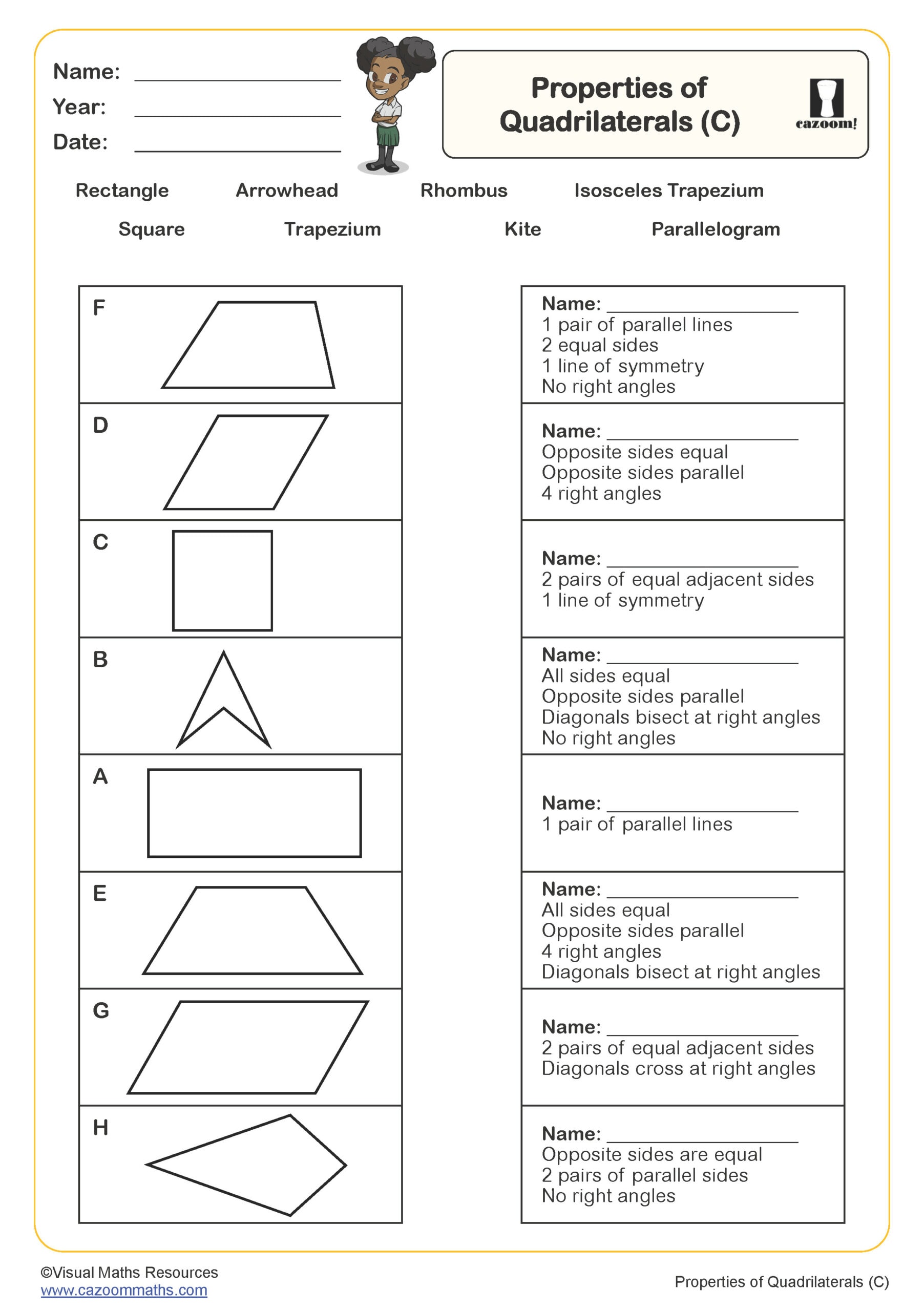
Properties of Quadrilaterals (Same and Different)
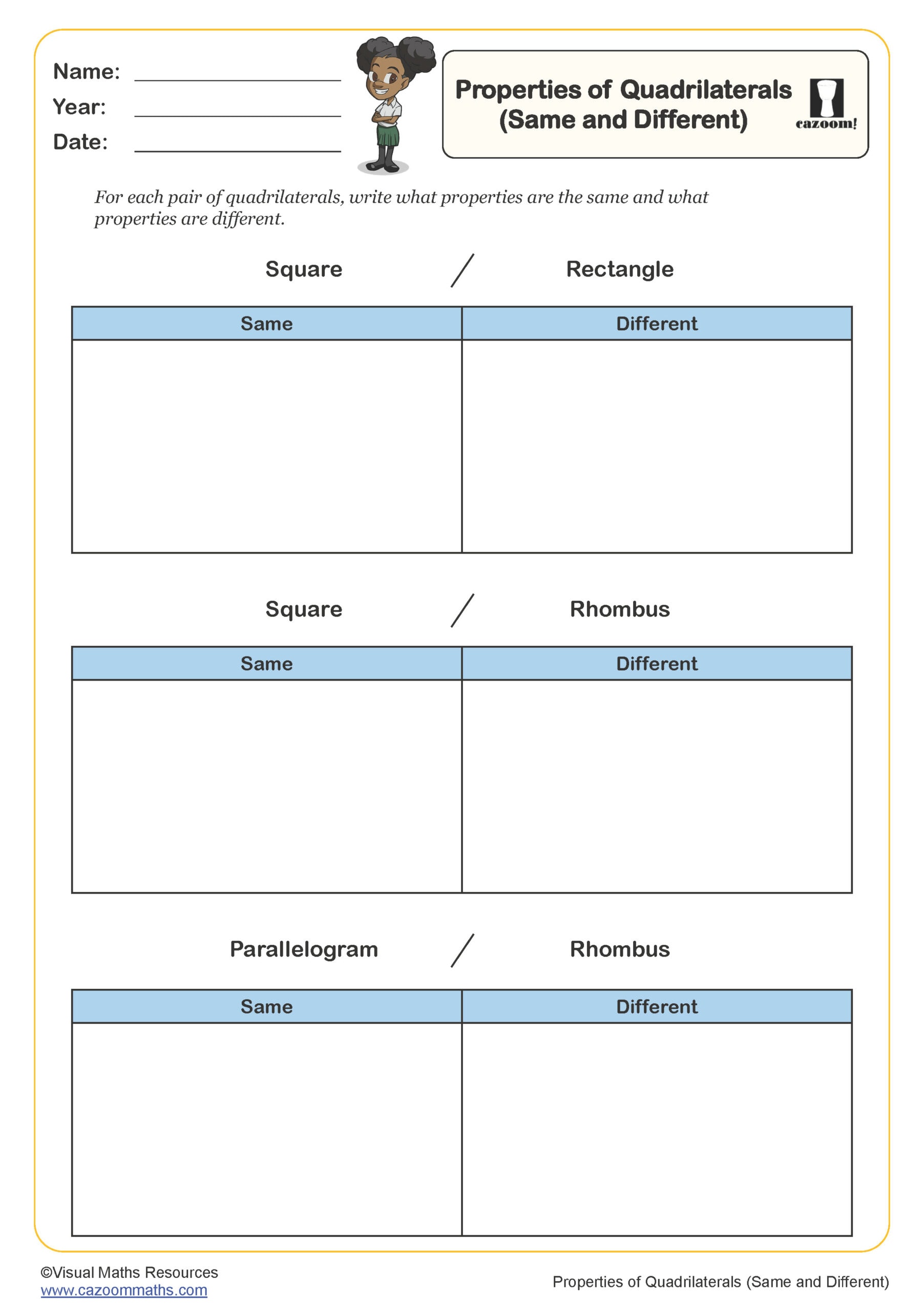
Properties of Quadrilaterals (Same and Different) (with clues)
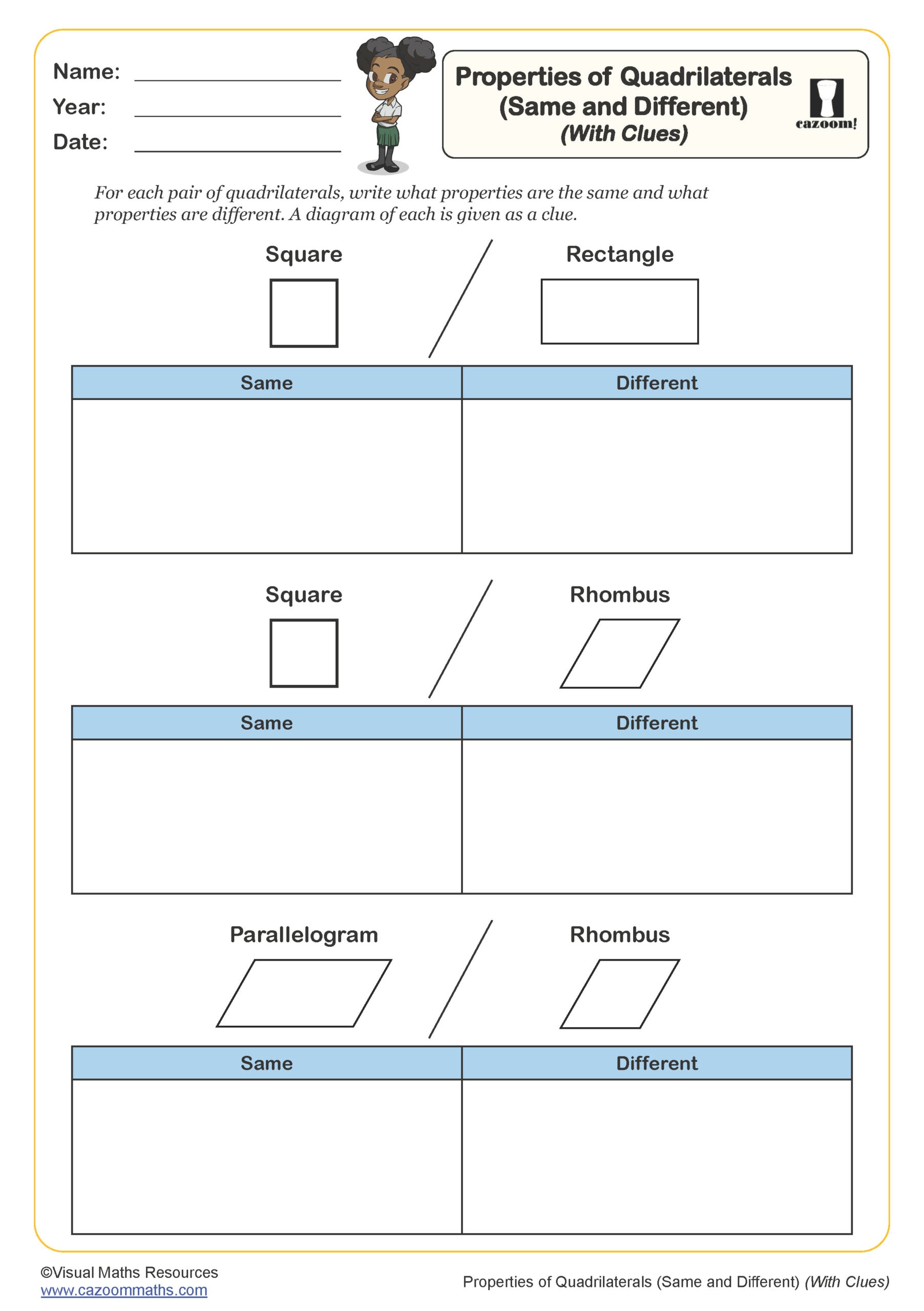
Types of Triangles
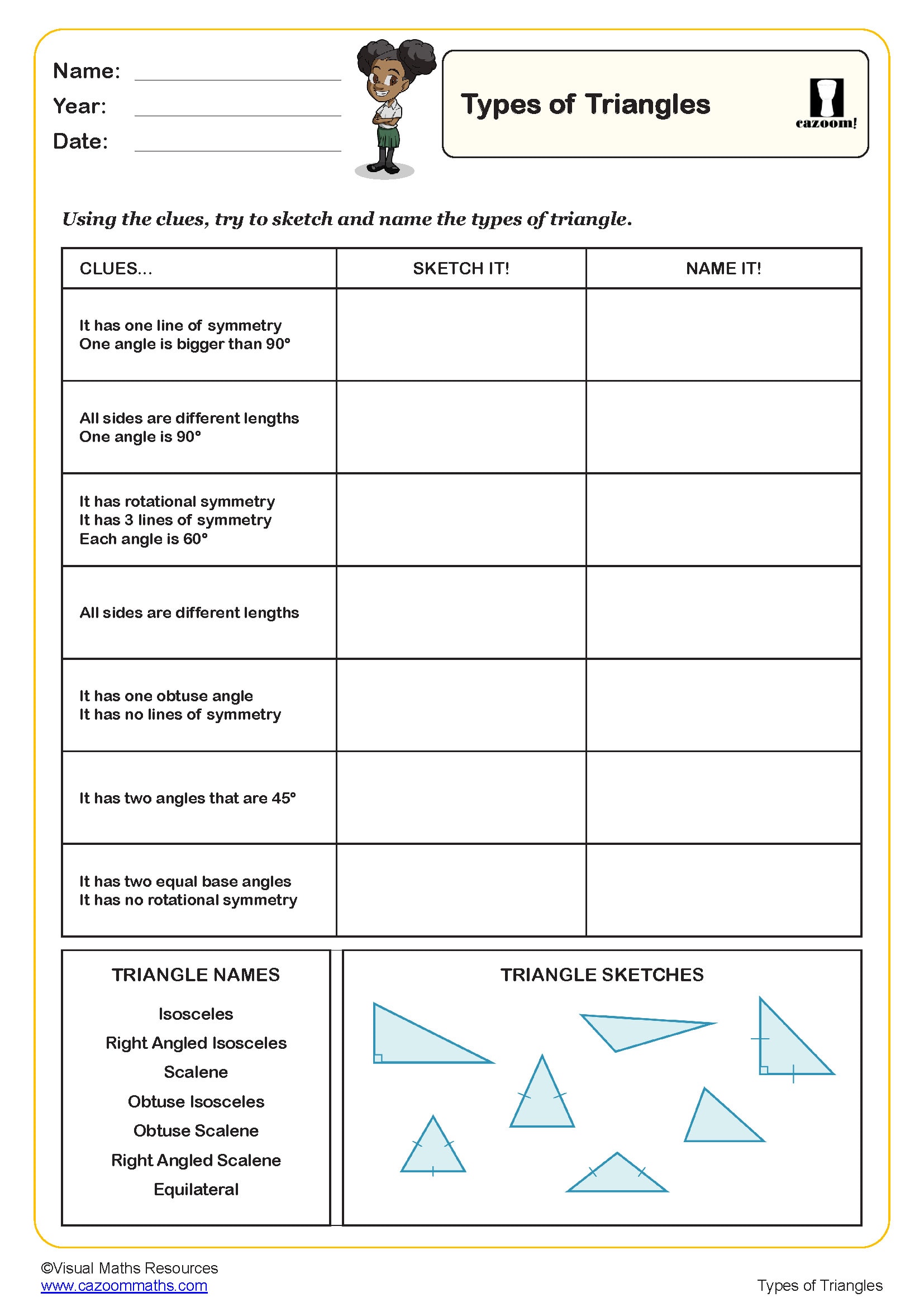
Premium Year 4 Geometry Worksheets with Step-by-Step Solutions
Download our high-quality geometry resources that match your teaching pace right away! That is why our team of experts has created topics, such as those that focus on proper mathematical reasoning, which prepare your students for KS2 assessments. Each worksheet progresses systematically through 2D and 3D shape properties, covering everything from identifying right angles to understanding symmetry lines. All of our worksheets are created in ready-to-use, printable PDF format and include detailed solutions that don't just show answers; they demonstrate the thinking process, making them perfect for guided practice sessions.
What Shape Properties Do Year 4 Students Master with These Resources?
Properties of shapes are the defining characteristics that help us identify and classify geometric figures – elements like the number of sides, angles, vertices, and whether lines are parallel or perpendicular. Mastering these foundational geometry concepts develops essential spatial reasoning skills that students apply throughout mathematics, from basic problem-solving to advanced topics like area, volume, and trigonometry. We've consistently observed that students who develop strong shape property knowledge early become significantly more confident with mathematical thinking and problem-solving.
Through our Year 4 geometry resources, students begin with fundamental concepts like identifying sides and corners, then advance to sophisticated ideas including perpendicular lines and rotational symmetry. The measuring activities consistently prove most engaging – there's genuine satisfaction when students use rulers to verify that opposite sides are truly parallel. We've included polygon classification, angle recognition, and 3D shape nets because these skills form the essential foundation for Year 5 geometry success.
Why Primary School Students Need Systematic Shape Properties Practice
Our classroom experience shows that primary school students who struggle with shape properties typically lack consistent practice opportunities rather than conceptual understanding. These structured worksheets provide the essential repetition that transforms uncertain guessing into confident mathematical reasoning. Regular engagement with geometric vocabulary and property identification tasks significantly improves performance in both daily assessments and statutory testing requirements.
• Develops spatial reasoning abilities crucial for advanced mathematical concepts
• Builds confidence with geometric terminology (vertices, faces, edges, parallel lines)
• Strengthens logical thinking patterns through systematic property identification
• Provides targeted preparation for KS2 SATs geometry questions
• Improves precision and accuracy in measuring and constructing geometric shapes
Real-World Applications: Where Students Use Shape Property Knowledge Daily
These shape property skills connect directly to design technology projects, where understanding angles and measurements becomes essential. We've seen students apply their learning to art lessons (creating symmetrical patterns), PE activities (understanding court layouts), and even playground games that involve spatial reasoning. It's actually quite satisfying when they start noticing geometric properties in architecture around school.
• Design and technology projects requiring accurate measurements and angle calculations
• Creative art activities involving symmetry, tessellation, and geometric pattern creation
• Architectural exploration when investigating buildings, bridges, and structural designs
• Basic engineering concepts through construction activities and building challenges
• Map reading and navigation skills using directional understanding and spatial orientation
• Sports and recreational games that develop spatial awareness and strategic positioning